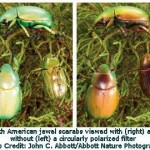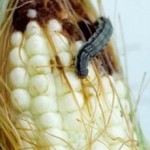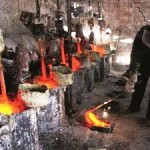 World Wildlife Fund (WWF) unveiled a groundbreaking new guide to responsible investing in 10 major commodities sectors on September 25.
World Wildlife Fund (WWF) unveiled a groundbreaking new guide to responsible investing in 10 major commodities sectors on September 25.
“The 2050 Criteria: Guide to Responsible Investment in Agricultural, Forest, and Seafood Commodities” comes amid accelerating global interest, and controversy, around the financing of food and agricultural commodities. The 2050 Criteria is designed as a field guide for mainstream investors, in particular banks, investors, and financial analysts, to help navigate this complexity and identify responsible companies and projects in the agricultural, forest and seafood industries.
Most significantly, The 2050 Criteria provides “Key Performance Criteria” for identifying responsible practice, helping to mitigate the primary sources of environmental and social risk for investors in these sectors. The 2050 Criteria “connects environmental science with the sustainability practices and policies of leading firms in each sector, resulting in both credible and practical recommendations.”
“Food security is the challenge of the 21st century. We absolutely need more investments in agriculture, not less,” says Joshua Levin of World Wildlife Fund. “Yet at the same time that allocation targets are rising, investors are awakening to a quagmire of material, reputational, and systemic risks. There is a clear need to untangle some of this complexity and provide clear and credible guidance for identifying responsible mainstream performers.”
“Current land, energy, water, and weather constraints are placing unprecedented pressure on humankind’s ability to access its most basic goods – food, fuel, and fiber. These shocks are already posing severe challenges for industry, investors, and society. Yet humanity must now produce more food in the next four decades than we have in the last 8,000 years of agriculture combined. There is no choice but to do so sustainably.”
The 2050 Criteria addresses 10 global commodity sectors that are in high demand, yet also generate some of the world’s most severe impacts on biodiversity, water, and the climate. These industries include: aquaculture; beef; cotton; dairy; palm oil; soy; sugar; timber, pulp, and paper; wild-caught seafood; and bioenergy.
By adopting the guidance in The 2050 Criteria, financiers will be able to:
- Manage critical business and reputational risks
- Reduce transaction costs and simplify decision making by aligning investment criteria with leading industry practice
- Contribute to improved risk adjusted returns
- Shape responsible practices on the ground in these high-impact sectors
The 2050 Criteria was launched at the Global AgInvesting Asia conference in Singapore on September 25-27. The conference brought together hundreds of allocators, fund managers, and industry executives to discuss the burgeoning asset class of agriculture and its surrounding themes.
Source WWF.












